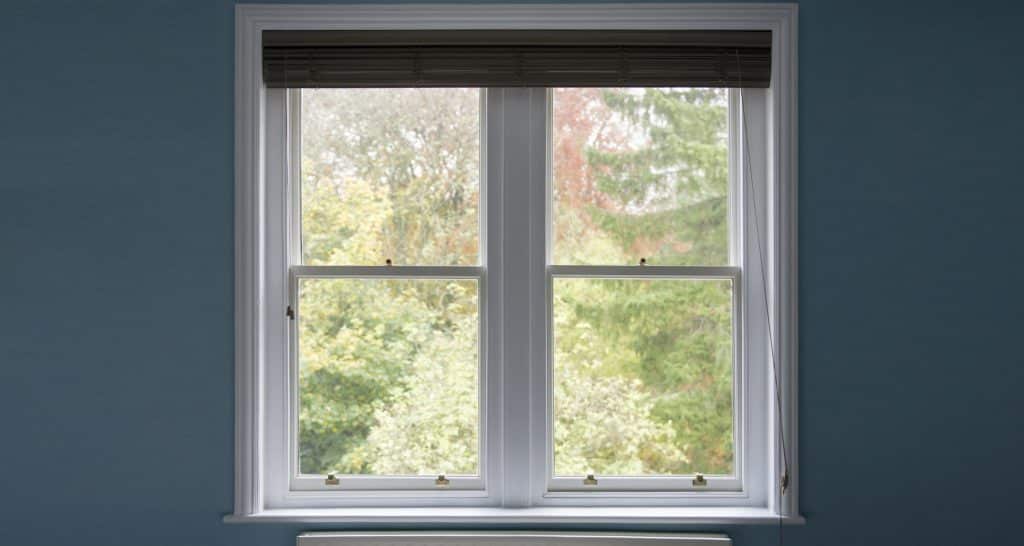The Condensation Problem – Effects on Your Health
Condensation – a word that can fill homeowners with dread. It’s bad for your health and damaging to your property. And if you have timber sash or casement windows, it can have a particularly detrimental effect on their lifespan.
If you ask most people, they’ll say that single glazing is the root cause of condensation running down the windows. However, this is not strictly true. So, where does it come from and what can you do about it?
The fact is, that we produce around 112 pints of airborne moisture a week in our homes – from cooking, washing and breathing. And this has to go somewhere. Generally, the moisture we produce goes into the air, which acts like a sponge. Depending on the relative humidity of the air (pressure and temperature), it will hold different amounts of moisture.
As the temperature drops, the relative humidity increases and the air’s ability to hold moisture decreases. This is why moisture is deposited near a cold surface – which is more often than not the glass in a window – causing condensation.
Double glazing is often seen as the solution to this problem. As the inner face of double glazing is warmer than single glazing, it will reduce the effects of condensation that you can see. But while replacing single glazing for double glazing might alleviate the most obvious symptoms – it won’t stop it from being caused. Installing double glazing simply moves the problem to the next cold surface – often your interior walls or window sills. Cue peeling wallpaper, mould and fungus.
How to get rid of condensation
So, what is the solution? Are my sash windows the issue? Not at all! Adequate ventilation in your home is key to success, whatever windows you have. A well‐ventilated space will help to remove moist air and keep your windows free from condensation. To achieve this, ensure your windows can be opened and closed easily – not sealed shut with years of built-up paint or excessive and unsuitable insulation.
As sash window experts, Ventrolla can help bring your windows back to fully functioning life. Whether you have single or double glazing, they can restore your windows helping your home to ‘breathe’ again.

The Hidden Culprit: Unveiling the Health Effects of Condensation
In the quest for a comfortable and healthy home, many of us focus on factors such as cleanliness, ventilation, and air quality. However, one often overlooked yet significant contributor to the well-being of occupants is condensation. The seemingly harmless accumulation of water vapour on surfaces can have far-reaching effects on health. In this article, we delve into the various ways condensation impacts our health and explore strategies to mitigate its effects.
Hidden Havens for Mould and Mildew
Condensation creates the perfect environment for mould and mildew growth. When warm, moist air comes into contact with cooler surfaces, water droplets form, providing a breeding ground for these fungi. Mold spores released into the air can trigger respiratory issues, exacerbating conditions such as asthma and allergies. Prolonged exposure may lead to chronic respiratory problems, making it imperative to address the root cause of condensation.
Humidity and Respiratory Distress
Condensation often signals an imbalance in indoor humidity levels. High humidity can result in increased respiratory distress for individuals with pre-existing conditions like asthma or chronic obstructive pulmonary disease (COPD). Inhaling damp air can irritate the airways, leading to coughing, wheezing, and shortness of breath. Furthermore, damp conditions may foster the growth of dust mites, known allergens that can trigger respiratory symptoms.
Structural Damage and Air Quality
Beyond its impact on respiratory health, condensation can wreak havoc on the structural integrity of a home. Damp conditions provide an ideal breeding ground for wood-rotting fungi, potentially compromising the structural stability of wooden components. Additionally, damp environments can result in the release of volatile organic compounds (VOCs) from materials like paints and glues, further deteriorating indoor air quality and posing health risks.

Headaches and Fatigue
Condensation can contribute to a general sense of discomfort and unwellness. Damp air often feels colder, causing individuals to increase heating levels, which, in turn, dries out the air. The combination of fluctuating temperatures and low humidity can lead to headaches and fatigue. Persistent exposure to these conditions may contribute to stress and impact mental well-being.
Health Implications for Vulnerable Populations
Vulnerable populations, such as the elderly, young children, and individuals with compromised immune systems, are particularly susceptible to the health effects of condensation. These groups may experience more severe respiratory symptoms and are at a higher risk of infections associated with mould exposure. As such, addressing condensation becomes crucial in creating safe living environments for these individuals.
Condensation may seem like a minor inconvenience, but its effects on health should not be underestimated. From respiratory distress and structural damage to headaches and fatigue, the implications of unchecked condensation are wide-ranging. Recognizing the signs of condensation and implementing measures to control indoor humidity levels are essential steps in safeguarding our health and creating homes that nurture well-being. As we strive for comfortable living spaces, let us not overlook the hidden impact of condensation on our most valuable asset—our health.
